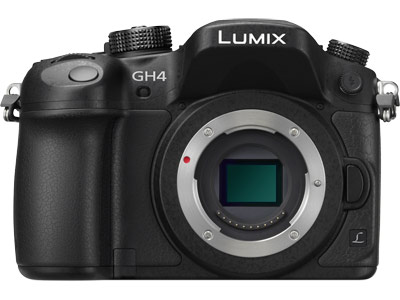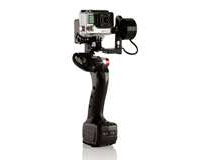’Tis the season for cool toys and technology. You’ve stuffed your kids stockings full of Elsa dolls, Transformers and maybe a Furby, but now it’s your turn. You’ve been good. You donated to charity this year, volunteered at a nonprofit and made your wife or husband dinner a couple of times. So in the spirit of commercialism, here’s my holiday wish list for the video journalist or documentary filmmaker.
Sony FS7 ($7,999)
If you really loved me, you would buy this camera.
I don’t expect anyone to get this camera for Christmukkah, but it doesn’t hurt to try, right? This is the motherlode. The dream camera for a small production company. It’s a hybrid DSLR and camcorder, it has a large sensor to get dreamy, film-like footage and the ergonomics and design of a video camera. It’s a beast from top to bottom, it can film super-slow-motion, record in 4k and you can switch out the lenses just like a DSLR. There are other large-sensor camcorders out there, but this seems to have the best design for the price.
Here’s a sample of the video.
Sony Professional: FS7 First Footage (3min) from Sony Professional on Vimeo.
Panasonic GH4 ($1,497.99) or GH3 ($697.99)

Credit: shop.panasonic.com
I own the Panasonic GH3. I highly recommend it for anyone who’s getting into DSLR videography (although you’ll soon start to call yourself a cinematographer). I’ve used Canons and Nikons, but when it comes to integrating video into a still camera, there’s no comparison. In the current Nikon models, you can’t adjust the iris while shooting video, which means you can’t adjust your exposure on-the-fly. I read that the Nikon D7200 will have that ability, but it’s not out yet. The Canon DSLRs will let you adjust the iris while shooting video, but you have to buy the Canon 5d Mark iii (top of the line) to get a headphone jack. That means you can’t monitor your audio while you’re shooting video, which may work in the movies, but doesn’t work in a newsy, run-and-gun shoot. The Panasonic GH3 and GH4 don’t suffer from the same setbacks. It has a slightly smaller sensor than the Canon and Nikons, but it’s still much bigger than a videocamera. There are tons of other reasons why I chose a GH3 over Canon or Nikon, but that’s a different post for a different day. The Pansonic GH4 shoots 4k video and if you can afford it, it’s worth the extra dough.
GoPro Hero 4 Silver ($399.99)

Credit: shop.gopro.com
This camera is some of the best bang for your buck out there. If you don’t know, the GoPro is a small action camera that snowboarders strap to their head before jumping off of cliffs, or at least that’s how it’s marketed. This camera is so much more. It’s waterproof, it’s rock solid and it’s tiny, meaning you can get shots with this mini-monster that you would have never been able to get before. If you sync it up with your smartphone, you can see what it sees, without being anywhere near it. Another option is to choose the GoPro Hero silver (which is the middle child of the product line-up) because it actually has an LCD screen in the back.
Shape ISEE Gimbal ($615.12)
Gimbals are all the rage right now. If you don’t know, they’re the technology used to steady cameras on helicopters to make sure you get a smooth shot. A company called Freefly Systems got the bright idea to take that technology and make a hand-held version. Their gimbal system will run you as much as your camera, if not more. While I’d like to ask for the Freelfly Mövi, I don’t want to put my wife in the poorhouse, so luckily there are a lot of quality knockoffs. This one is about a tenth of the price, but only works with a GoPro camera or smartphone, which isn’t a huge issue, because the GoPro takes fantastic video and you want a wide-angle lens with a piece of equipment like this. You can take amazing, cinematic smooth moving shots and unleash your inner Scorsese (because ever since I can remember, I’ve wanted to be a cinematographer).
Manfrotto Fluid Monopod ($255.76)
Besides my camera, this is the best piece of equipment I’ve purchased. It gives you the mobility and stability. It’s not as steady as a tripod, but it’s much faster. It’s not as fast as shooting off of the shoulder, but it’s much steadier. The three legs at the bottom give it enough stability for it to stand upright on its own, but I wouldn’t move too far from it.
I use this for 90 percent of my shoots, and the only time I use my tripod is for shooting interviews.
Edelkrone Slider Plus ($499.95)
If you watch videos on Vimeo regularly, you’ve probably seen a slider shot (but then again, you may not be as nerdy as me). A slider is a small, portable version of a dolly. It’s a way to put your camera on a short track and slide it deliberately left and right or forwards and backwards. It adds beautiful, cinematic movement to your shots. The Edelkrone version is a fantastic innovation on a simple device; it’s a slider that slides on itself, to create a smaller footprint. It’s perfect, because it’s small enough to fit in a backpack, but creates a giant, movie-like effect.
Aviator Travel Jib ($474.00)
The jib is another piece of cinematic equipment to trickle down from movies into documentary filmmaking and video journalism. Jibs used to be incredibly expensive, giant contraptions that added a sweeping vertical movement to your camera. A couple of years ago, this company Aviator developed its version of the travel jib, which sets up in seconds on a tripod and can fold down into something small enough to attach to a backpack. There are other companies that make travel jibs, but this one is a great price, easy to set up and easy to carry.
DJI Phantom 2 with Gimbal ($789.00)
Since you already bought the GoPro, you might as well fly it through the air. For less than $1,000 you can buy this quadcopter drone with a gimbal attached (spring for the gimbal if you want usable footage). Right now drones are in a grey area with the Federal Aviation Administration. You’re allowed to fly them for fun, but you can’t make any money off of them. The FAA is expecting to issue guidelines for lighter drones like this one soon, and then hopefully you can use the footage you shoot in your documentary or news package.







